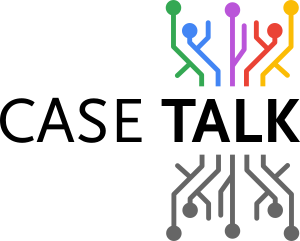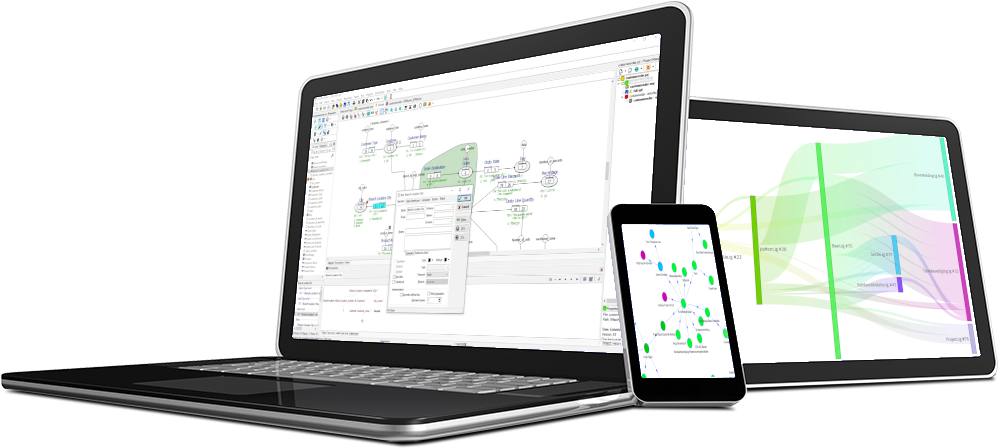"As a centrally positioned Data Services team in Rotterdam, we wanted to explore the possibilities of Fact-Oriented Modeling (FOM) for several reasons:
- We see a gap between legislation and regulations, and operational systems, which is something Ronald Damhof also discusses.
- Due to digitalization (a computer is relatively simple), it has become clear that we need to be very specific in our definitions and regulations.
- Can FOM help identify ambiguity in, for example, the regulations applied to a municipality?
We wanted to investigate this in a pilot related to Rotterdam’s policies. We carried out the pilot internally by modeling a GLO (Data Delivery Agreement) process. The pilot was conducted in Casetalk with support from Marco Wobben."
Robert Jansen and Victor van der Kloet
Municipality of Rotterdam
What is FOM?
Effective communication and consistent semantics are always essential to prevent misunderstandings, mistakes, and inefficiency. Clear definitions, a shared understanding, and structured information allow us to make better decisions, improve processes, and drive innovation. At the same time, all stakeholders can develop a common language to enhance communication.
Fact-Oriented Modeling is a method based on natural language; natural language with concrete examples that express how we speak about data to perform our work. The models that are built step-by-step in this manner can be easily verified by all stakeholders, encouraging common language use and definitions.
By using supporting tools that back this method, a wide range of artifacts (clear descriptions) can be generated that seamlessly connect with both business professionals' communication and significantly accelerate and simplify the work of IT specialists. The fact that the original wording can always be traced and generated makes the work verifiable and understandable for all parties from start to finish.
In our current world, with increasing digitalization and regulations in organizations, carefully crafting models that describe exactly what is needed and required is crucial. Unlike other forms of modeling, Fact-Oriented Modeling is closely aligned with the business. While we are already familiar with Technical, Logical, and Conceptual modeling as a municipality, we had no prior experience with FOM. Involving the business more in modeling is seen as a way to develop qualitatively better models by connecting with legal, regulatory, and internal operational policy layers.
"How nice would it be if the ministries provided us as municipalities with pre-modeled laws?"
Robert Jansen
Applicability
Within the municipality of Rotterdam, the Data Services team has embraced the FAIR principle. Working with models is inherently part of this, as it’s necessary to understand which data you can allow to flow. In our search for Fact-Oriented Modeling possibilities, we discovered that a few players are on the market. A pilot with Casetalk was easy to set up, so we started working with this software.
We hope to demonstrate with this pilot that people in the following roles and functions can benefit from it:
- Anyone already interested in a UML model (especially architects, developers, privacy officers, and security specialists).
- Data processing roles (BI, algorithms, etc.), particularly when reusing data. We hope that FOM is more interesting due to its critical formulation of factual sentences.
- People working on Linked Data projects.
- Managing Masterdata versus Referencedata sets.
Findings
FOM is a method that makes it necessary and possible to engage with and critically think about the business. New questions from the business and deeper insights emerge during the modeling process through factual sentences. This leads to better models and unambiguous communication from the business itself.
- The FOM method helps in discussions with the business by forcing questions to be asked in order to formulate a clear fact, concept name, and concept definitions, thereby eliminating uncertainties. Fact sentences force you (you cannot avoid it) to gather everything in a structured way. All questions are explicitly voiced.
- By using full sentences, a complicated model that was previously drawn with blocks becomes understandable to the business.
- You get a better model (in terms of content). Fewer assumptions are made thanks to the alignment, which is important for architects and developers.
- Masterdata versus Referencedata is better identified, leading to better data management, fewer duplicates, and better ways to maintain reliability and quality.

Challenges:
- Working with the tool is not simple and requires more effort to understand its intricacies and use it effectively. We recommend taking the training.
- Collaborating on a single model within one domain is desirable. The project scoping should take this into account. The installation and licensing model we chose for this pilot made collaborating on a single model difficult.
Conclusion
The knowledge of modeling, especially Fact-Oriented Modeling, is not widespread. Information Modeling as a profession should receive more attention as automation develops. Despite all the techniques and tools, supporting communication with the business and methods to help the business in this regard are scarce. FOM is an applicable method for this.
The business has found the approach clarifying and considers the critical questions helpful. Additionally, they found the FOM diagrams with factual sentences and examples to be very readable.
We are definitely considering taking further steps in the FOM field, realizing that while it’s powerful for the business to potentially model on their own, the facilitating role of an expert is also necessary. We will continue working on this in Rotterdam in the near future.
Contacts:
Robert Jansen (Rotterdam),
Victor van der Kloet (Rotterdam),
Marco Wobben (CaseTalk)


